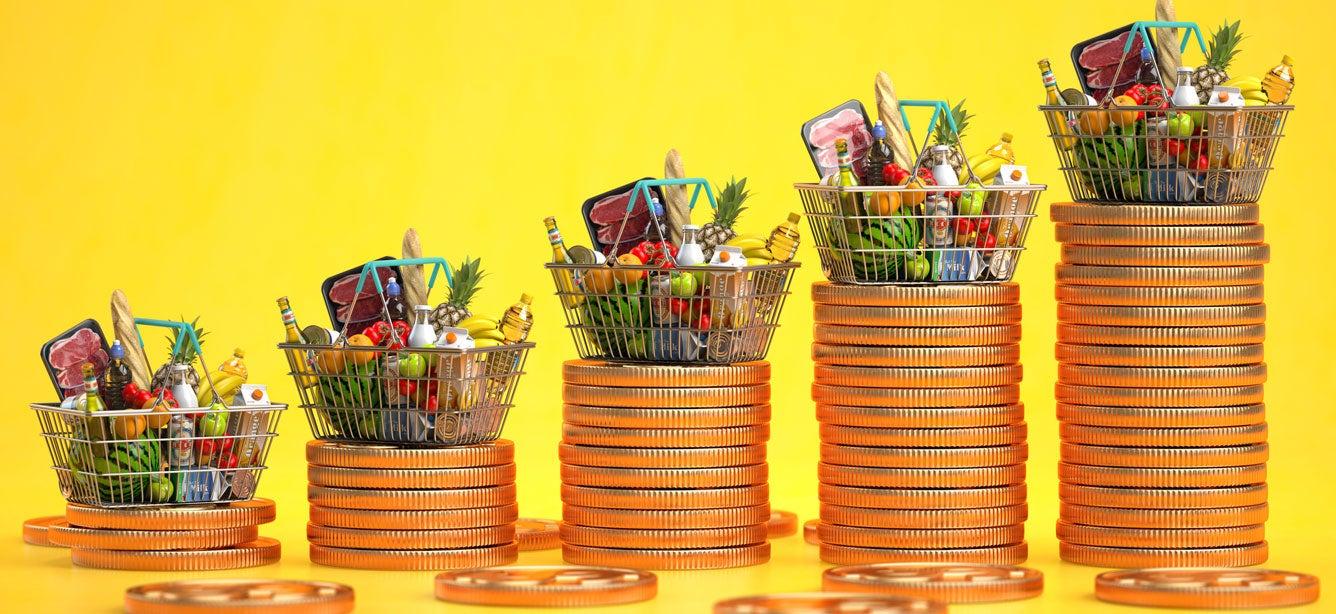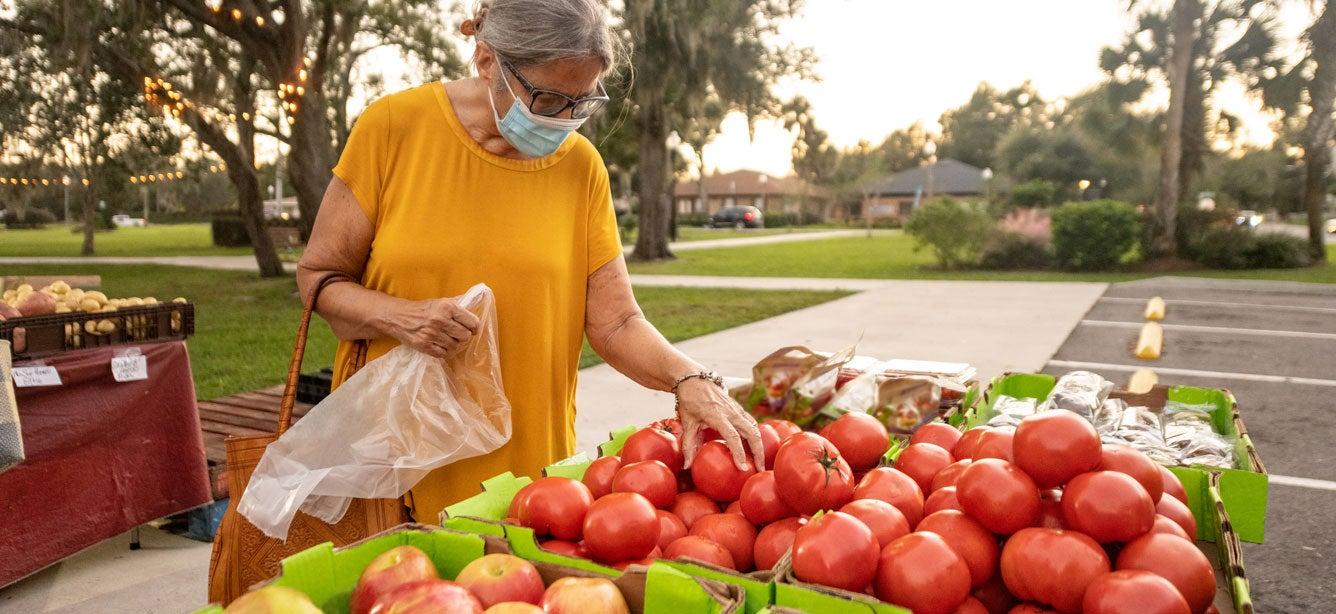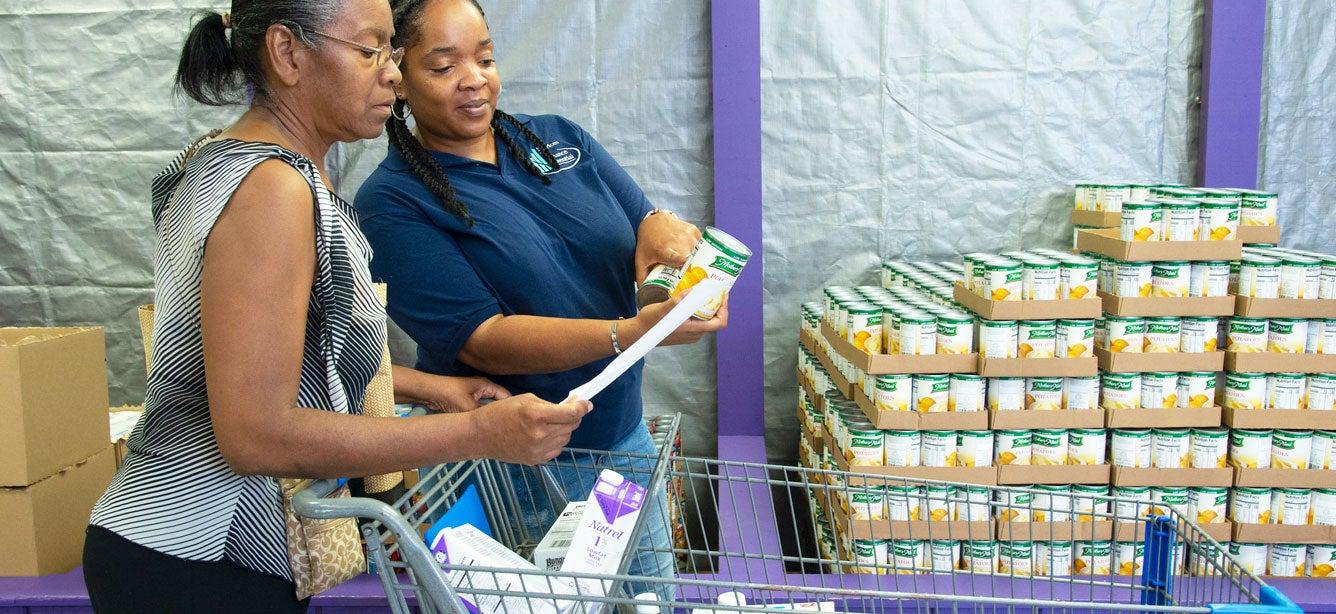
Related Topics
If you're worried about the high costs of food, you're certainly not alone. Rising grocery store prices have many Americans concerned, particularly older adults who live on a fixed or limited income.
How much have grocery prices increased?
The USDA's Consumer Price Index (CPI) measures the prices paid by consumers for good and services over time and looks at the spending patterns for all urban consumers and urban wage earners and clerical workers. According to its latest Food Price Outlook for 2025 and 2026, food prices were 3.2% higher in August 2025 compared to the same month last year. Overall prices for 'food-at-home' (grocery store or supermarket food purchases) rose by 0.4% between July and August 2025—representing a 2.7% increase over August 2024.1 Restaurant purchases (or food-away-from home) increased by 0.3% between July and August 2025, and were 3.9% higher than in August 2024.1
Will food prices go down in 2026?
Unfortunately, no—at least not according to the USDA. While the agency does predict that food inflation will slow down a little, food prices will still increase by nearly 3% in 2026. That's why it makes sense to uncover ways to save on groceries, including seeing if you're eligible for food assistance benefits. Both can help counter the effects of rising food costs that are outside our control. Below are five tried-and-true approaches you can use to spend less at the grocery store.
5 ways to save on groceries every month
1. Use a budget calendar. A budget calendar is a paper or digital calendar that you use to predict how much money will flow in and out of your budget each month. The key components of a budget calendar include:
- Income (including things like wages, pension, and Social Security benefits)
- Household expenses (including things like rent/mortgage, cell phone plans, utilities, and groceries)
- Savings (including money set aside for special purchases, and contributions to an emergency fund)
Organizing your finances ahead of time can help you see how much you have to comfortably spend on groceries each week. Budgeting helps you plan smarter, shop more efficiently, and save money that can be spent on other necessities.
2. Make meal planning a habit. Preparing your meals at home costs much less than ordering takeout or dining at a restaurant. It's much healthier, too. Meal planning helps you stretch your budget even further. By planning your meals for the entire week ahead of time, you can reduce your trips to the supermarket. This also helps streamline your grocery list and focus only on buying what your meals call for.
If you're unsure where to begin with meal planning, follow these three steps:
- Find simple, healthy recipes online or in your favorite cookbook.
- Make a list of the items you need to buy to make those recipes.
- Prepare your ingredients in advance if you can(chop up vegetables, for example).
To make the most of your grocery savings, try planning your meals around your store's weekly sales flyer. It’s also a good idea to stock up on the staples you use most often when the price is right.
3. Look for savings. Grocery store savings are all around you if you know where to look. Here are a few ways to find deals that lead to discounts:
- Clip coupons: Whether you find them in the Sunday paper, online, or in your mailbox, coupons can help you save money on the products you use regularly. Some grocery stores will even double the value of any coupons you have.
- Join store loyalty programs: Many grocery stores offer free loyalty or reward programs. As a member, you can receive valuable coupons and exclusive discounts. You might also be able to earn points to apply toward a grocery purchase.
- Find store-brand alternatives: Many of us prefer brand-name products. But switching can save some money. House brands are almost always less expensive than the leading brands, and the quality is often comparable (if not better).
4. Shop for groceries online. You might think of online food shopping as more expensive, but it can actually save you money. For one thing, shopping online prevents you from making impulse buys in a physical store. You can also check your fridge and pantry before placing an order so you don't buy what you already have.
5. See if you’re eligible for SNAP assistance. If high food prices are making it harder and harder to afford groceries, and you don’t currently receive Supplemental Nutrition Assistance Program (SNAP) benefits, it’s a good time to find out if you qualify.
SNAP provides monthly financial assistance to help people of all ages buy the food they need—including older adults like Mary, age 63. Mary was recently approved for SNAP and is using her benefits on a regular basis.
"I go to a farmers market every two weeks and get fruits and vegetables there with my EBT card," Mary said.
Wondering how to apply for SNAP?
Many older adults don’t participate in SNAP because the application process can be complicated. But we’ve made it easier. Through NCOA's BenefitsCheckup.org, you can:
- Learn more about the food assistance programs, including SNAP
- See if you qualify for SNAP and other benefit programs offered in your area.
- Get information on how to apply, and get help from a Benefits Enrollment Center to walk you through the application process step by step.
Source
1. USDA Economic Research Service. Summary Findings: Food Price Outlook, 2025 and 2026. September 25, 2025. Found on the Internet at https://www.ers.usda.gov/data-products/food-price-outlook/summary-findings



